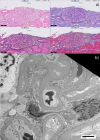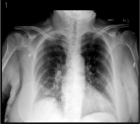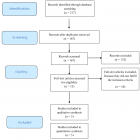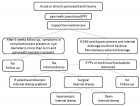About Debere Berhan University
Debere Berhan University
Articles by Debere Berhan University
Utilization of post abortal contraceptive use and associated factors among women who came for abortion service at Debre Berhan Hospital, Debre Berhan, Ethiopia March 2019: Institution based cross sectional study
Published on: 20th June, 2019
OCLC Number/Unique Identifier: 8193601650
Background: Post abortion family planning (PAFP) is the initiation and use of family planning methods immediately after, and within 48 hours of an abortion, before fertility returns. In most women fertility returns on average about two weeks after an abortion; however, ovulation can occur as early as 11 days post-abortion.
Objective: To assess utilization of post abortal contraceptive use and associated factors among women who came for abortion service at Debre Berhan Referral Hospital, Debre Berhan, Ethiopia March 2019.
Methodology: Institutional based cross sectional study design was conducted using hospital data obtained from Gynecology ward in Debre Berhan Referral Hospital, Debre Berhan, Ethiopia, from March 1 -10, 2019. A systematic random sampling technique was used from the abortion register log book. Data was cleaned manually, coded and entered into Epi-data version 3.1 then exported to and analyzed by SPSS version 21 software. Multivariate analysis with AOR, 95% CI and p-value< 0.05 were used to identify variables which have significant association.
Result: The finding of the current study showed that among 371 study subjects 170(45.8%) utilized post abortal family planning. There was a significant association between utility of post abortal family planning and post abortion family planning counseling [AOR: 19.245, 95% CI: (10.199, 36.313), p-value= 0.001] and women who were primiparous had 5 times more likely to utilize post abortal family planning as compared to the women who were nullyparous [AOR: 5.314, 95%CI (1.089, 24.210), p value=0.001].
Conclusion and Recommendation: From a total of 371 study subjects 45.8% have utilize contraceptive after abortion service received. This study also showed that parity and counseling’s of family planning were statistically significant associated with utilization of post abortal family planning. We recommend Debre Berhan hospital to scale up activities on post abortal care to increase the number of clients who post abortal family planning.
The prevalence and risk factors of chronic kidney disease among type 2 diabetes mellitus follow-up patients at Debre Berhan Referral Hospital, Central Ethiopia
Published on: 20th February, 2023
Background: Chronic kidney disease is a progressive loss in renal function that is more accepted as global public health importance and its magnitude is overgrowing in the least developed countries like Ethiopia. No data was found in Debre Birhan Central Ethiopia on the magnitude of chronic kidney disease among type 2 diabetes patients. Methods: Institution-based cross-sectional study was conducted among 327 at Debre Berhan Referral Hospital from March to June 2019 in Adult (≥ 18 years) type 2 diabetes follow-up patients who volunteered to give informed written consent were included in the study. Systematic random sampling was used. Data were collected by interviews using structured and pre-tested questionnaires. Descriptive statistics of the continuous and categorical variables were done. The bi-variable and multivariable logistic regression was done to show the net effect of explanatory variables on chronic renal disease. Results: A total of 327 study participants were involved in the final analysis. The Prevalence of CKD among type 2 diabetic patients was 15.9%. A significant association was found with age > 60 years [AOR 3.5 (95% CI 1.8-6.8)], alcoholic patients [AOR 2.4 (95% CI 1.2-5.1)], glycated hemoglobin levels above 7% [AOR 2.5 (95 CI 1.5-4.1)], higher level of LDL greater than 100 g/dl [AOR 2.7 (95% CI 1.9-4)] and lower level of HDL [AOR 2.9 (95% CI 1.4-6)].Conclusion: The magnitude of chronic kidney disease among type 2 diabetic follow-up patients was 15.9%. Estimated GFR should be determined for diabetic patients at regular intervals of time for earlier diagnosis of chronic kidney disease.
The prevalence and risk factors of chronic kidney disease among type 2 diabetes mellitus follow-up patients at Debre Berhan Referral Hospital, Central Ethiopia
Published on: 20th February, 2023
Background: Chronic kidney disease is a progressive loss in renal function that is more accepted as global public health importance and its magnitude is overgrowing in the least developed countries like Ethiopia. No data was found in Debre Birhan Central Ethiopia on the magnitude of chronic kidney disease among type 2 diabetes patients. Methods: Institution-based cross-sectional study was conducted among 327 at Debre Berhan Referral Hospital from March to June 2019 in Adult (≥ 18 years) type 2 diabetes follow-up patients who volunteered to give informed written consent were included in the study. Systematic random sampling was used. Data were collected by interviews using structured and pre-tested questionnaires. Descriptive statistics of the continuous and categorical variables were done. The bi-variable and multivariable logistic regression was done to show the net effect of explanatory variables on chronic renal disease. Results: A total of 327 study participants were involved in the final analysis. The Prevalence of CKD among type 2 diabetic patients was 15.9%. A significant association was found with age > 60 years [AOR 3.5 (95% CI 1.8-6.8)], alcoholic patients [AOR 2.4 (95% CI 1.2-5.1)], glycated hemoglobin levels above 7% [AOR 2.5 (95 CI 1.5-4.1)], higher level of LDL greater than 100 g/dl [AOR 2.7 (95% CI 1.9-4)] and lower level of HDL [AOR 2.9 (95% CI 1.4-6)].Conclusion: The magnitude of chronic kidney disease among type 2 diabetic follow-up patients was 15.9%. Estimated GFR should be determined for diabetic patients at regular intervals of time for earlier diagnosis of chronic kidney disease.

HSPI: We're glad you're here. Please click "create a new Query" if you are a new visitor to our website and need further information from us.
If you are already a member of our network and need to keep track of any developments regarding a question you have already submitted, click "take me to my Query."
























































































































































